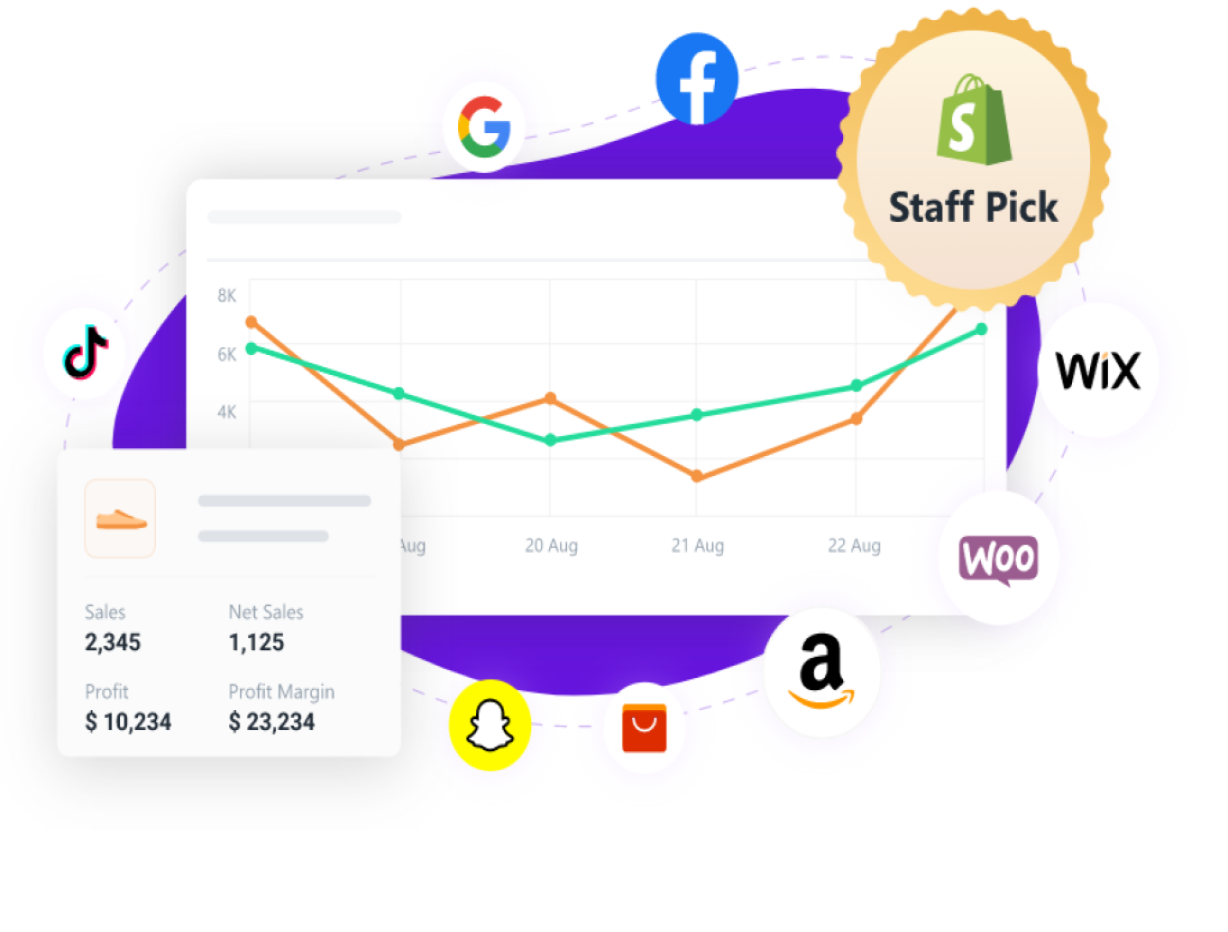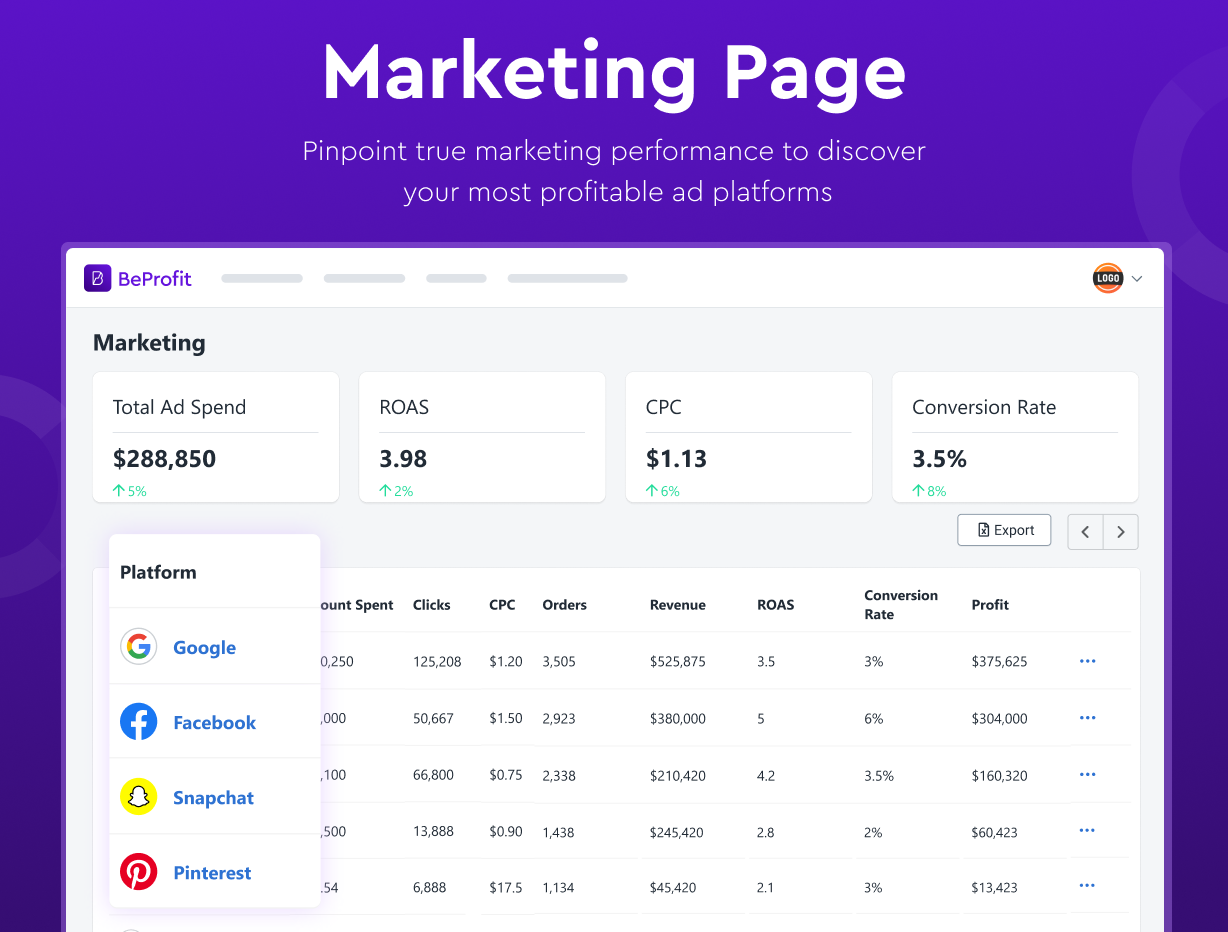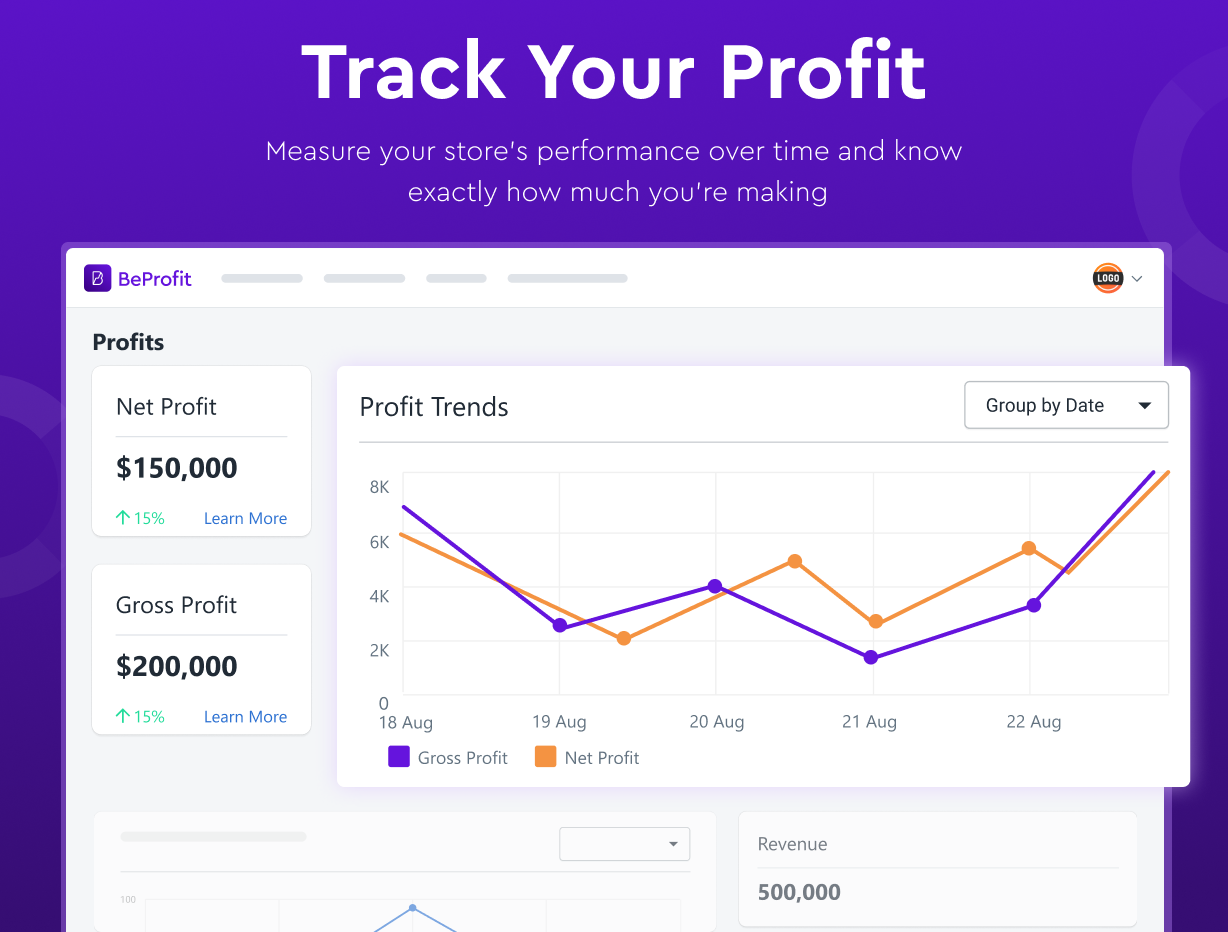Top 7 Amazon Marketing Metrics You Should 100% Be Tracking
Updated April 26, 2023

Marketing metrics are used to measure the success of a campaign and, in conjunction with retail metrics, can help clarify which methods are fostering business growth and which may be impeding it.
Which Amazon Marketing Metrics Are Most Important?
You can track a variety of metrics, but you will primarily focus on metrics pertinent to the type of campaign you're running and its objectives. However, there are core metrics you should always measure, and they are:
- Impressions
- Click-Through Rate
- Cost-per-Click
- Conversion Rate
- Return on Ad Spend
- Advertising Cost of Sales
- Total Advertising Cost of Sales
Understanding these Amazon marketing metrics can benefit you and your business. Now that you are aware of the marketing metrics you should track, let's examine each of them individually.
» Are you using other advertising platforms? See whether Amazon ads vs Google ads are better
Data Analysis Made Easy
Data analysis can be complicated, particularly when analyzing your profits and expenses. The BeProfit analysis dashboard is designed to simplify your life.




» Curious about BeProfit's offering? Explore BeProfit's features
The BeProfit analysis dashboard simplifies and streamlines your ability to monitor your profit by analyzing and automating the process.
How BeProfit Analysis Dashboard simplifies tracking profits:
- Performs analyses so you always know your precise profit.
- It is compatible with your desktop and mobile device.
- Keep track of multiple sources of income.
- Integrates your storefronts into a single management system.
1. Impressions
Impressions refer to the number of times your content/ad is displayed to a viewer, but this does not necessarily indicate that the content is engaged with or clicked on. Impressions are not unique and are counted whenever the content is displayed.
To calculate possible impressions for a Cost Per Mille (CPM) ad campaign:
Impressions = Budget / CPM × 1,000
Impressions can help you understand how many potential customers see your product. By comparing impressions to other metrics like reach and CTR, you can gauge the success of your ad.
2. Click-Through Rate
Click-through rate (CTR) is the ratio of clicks to impressions for an ad. CTR reveals only those viewers who have clicked and followed an ad, making it a more targeted metric than impressions.
To calculate CTR:
CTR = Number of clicks / Number of impressions X 100
A good average CTR is 2%; however, this number is highly dependent on the campaign's circumstances. A higher CTR indicates a successful campaign that is attracting customers, whereas a lower CTR indicates that something about the campaign is either discouraging customers or is not suitable for the intended audience.
3. Cost-per-Click
Cost-per-click (CPC) refers to how much each click on an ad costs you. CPC is frequently used in well-targeted marketing campaigns, as the advertiser pays each time a viewer clicks on their ad.
To calculate CPC:
CPC = Total cost of clicks / Total number of clicks
CPC assists with marketing budget management by revealing the cost of your brand's advertising efforts. If you have a very high CPC and a low conversion rate, your business may quickly be operating at a loss.
4. Conversion Rate
Conversion rate measures the percentage of passive, prospective customers who become active, engaged customers. Conversion occurs when a customer completes the promoted call to action (e.g., placing an order, subscribing, etc.).
To calculate conversion rate:
Conversion Rate = Total conversions / Total number of sessions X 100
Your campaign is successful if it resonates with your target audience and persuades them to take the desired action, as indicated by a high conversion rate.
5. Return on Ad Spend
Return on ad spend (ROAS) measures how much revenue an ad campaign generates relative to the cost of the campaign.
To calculate ROAS:
ROAS = Total ad revenue / Total ad costs
ROAS provides information regarding profitability. Use it to determine which campaigns generate the most revenue and which are less successful.
» Don't understand how to do ROAS calculations? See how Amazon ROAS is simplified
6. Advertising Cost of Sales
Advertising Cost of Sales (ACos) is an Amazon-specific metric that measures the performance and success of pay-per-click (PPC) advertising campaigns related to Amazon Sponsored Products. ACos employs the same metrics as ROAS, but it is represented differently.
To calculate ACos:
ACos = Total ad costs / Total ad revenue X 100
This is the inverse of ROAS and represents an increase in percentage. A good Amazon ACoS is contingent on a number of factors, such as the type of business and industry. Nonetheless, avoid analyzing ACos on its own. Think about your profit margins and break-even points as well.
» Not sure where to get Amazon sales data? Follow these steps
7. Total Advertising Cost of Sales
Total Advertising Cost of Sales (TACoS) is similar to ROAS and ACoS, in that it also demonstrates the success of a marketing campaign, but it shows how a campaign affects your entire business (including organic traffic) and not just direct ad revenue.
To calculate TACoS:
TACoS = Total ad costs / Total revenue X 100
This metric can help you determine how your campaigns affect your company's overall revenue growth and whether or not you remain profitable after advertising.
» Struggling to track your Amazon sales? Learn how Google Analytics can help
Track Marketing Metrics With Amazon Advertising & Reports
Amazon makes it easy to track these metrics in a single location through its advertising reports including Amazon DSP, Sponsored brands, video ads, and more. The ability to interpret Amazon advertising reports can provide numerous benefits for your business, including:
- A better understanding of audiences: Ad metrics can help you understand your customers' preferences and structure your future business accordingly.
- Ability to prove advertising impact: Assess your campaigns' effectiveness. Then, invest in successful campaigns and stop unsuccessful ones.
- Optimization of marketing strategies: Campaigns can be refined for the future to deliver even better results.
» Find out what ad trackers are and how you can use them in e-commerce
Track and Analyze Your Data With BeProfit
Marketing activities, performance, customers, and revenue are all interconnected. Understanding these relationships will assist you in making informed decisions regarding your Amazon platform.
Rather than a generic ad spend tracker, consider investing in an all-in-one analytics dashboard to monitor your company's expenses and profits if tracking and analyzing this data seems complicated. However, keep in mind that not all profit calculators are accurate; the best profit calculators for Amazon take all relevant factors into consideration.
The BeProfit app offers e-commerce sellers insights that enable them to understand and scale their businesses. The app allows you to connect all your stores, allowing you to obtain a comprehensive view of your business operations.








